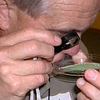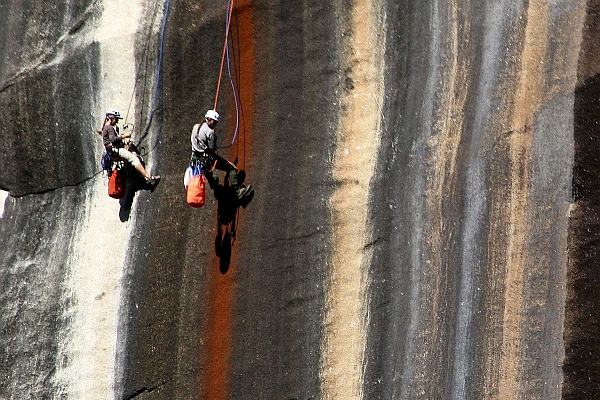EISRIESENWELT, AUSTRIA—Tracing his glove along a chalky layer in a house-size block of ice that lines this cave in the Austrian Alps, Michael Behm can feel all that is left of an ancient warm spell. The ice, likely formed over the decades or centuries as calcium-enriched rainwater trickled deep in to the cave and froze, must have once warmed enough on top to melt and release a few years’ worth of the mineral, the Vienna University of Technology geophysicist explains.
Category Archives: Science Magazine
Collaborating with Citizen Scientists
 Climbing one of the world’s biggest granite walls is different from climbing trees, as National Park Service botanist Martin Hutten discovered while dangling from a cliff in the spray of Vernal Falls high above the Yosemite Valley. Hutten apprenticed in the logging industry before he started graduate school, so he new how to climb trees. “I could trust myself to a rope,” he recalls, “but I’d definitely never hung off a cliff or collected [samples] from a cliff.”
Climbing one of the world’s biggest granite walls is different from climbing trees, as National Park Service botanist Martin Hutten discovered while dangling from a cliff in the spray of Vernal Falls high above the Yosemite Valley. Hutten apprenticed in the logging industry before he started graduate school, so he new how to climb trees. “I could trust myself to a rope,” he recalls, “but I’d definitely never hung off a cliff or collected [samples] from a cliff.”
Iceland Eruptions Fuel Interest in Volcanic Gas Monitoring
REYKJAVIK–As a brown cloud of ash drifts down from the slopes of Eyjafjallajökull toward their truck, Hanna Kaasalainen warns a colleague that their gas masks won’t be much good against carbon dioxide. The masks filter out poisonous gases released by magma such as sulfur dioxide, but carbon dioxide can simply displace oxygen in the air, asphyxiating the researchers as they take ash samples alongside a haze-enshrouded, deserted road. “We shouldn’t stay very long,” the University of Iceland geochemistry graduate student advises, before strapping on a bright yellow mask and opening the door. Continue reading Iceland Eruptions Fuel Interest in Volcanic Gas Monitoring
Transitioning from Researcher to Outreacher
 Shelley Bolderson was scraping mud from a trowel one day in an Anglo-Saxon midden in St. Neots, United Kingdom, when she realized she didn’t want to be an archaeologist any longer. “It was winter, and I’d spent ages on that particular site,” she recalls. “It was really kind of soul-destroying work.”
Shelley Bolderson was scraping mud from a trowel one day in an Anglo-Saxon midden in St. Neots, United Kingdom, when she realized she didn’t want to be an archaeologist any longer. “It was winter, and I’d spent ages on that particular site,” she recalls. “It was really kind of soul-destroying work.”
Until that point, Bolderson had worked as a freelance archaeologist around England, mostly in urban environments, where she assessed building sites before development. She had a bachelor’s degree in archaeology from the University of Southampton in the U.K. and wasn’t interested in doing a master’s or Ph.D. She sought temporary work while deciding what to do next.
One of her temporary jobs was at the University of Cambridge in the U.K. in the office that coordinates the Cambridge Science Festival, an annual, weeklong event that shares Cambridge-area science research with the public. “I saw a new career I had no idea existed beforehand and thought it looked really exciting,” she says. When a position coordinating the science festival opened up in the office, Bolderson applied for it.
Continue reading Transitioning from Researcher to Outreacher


